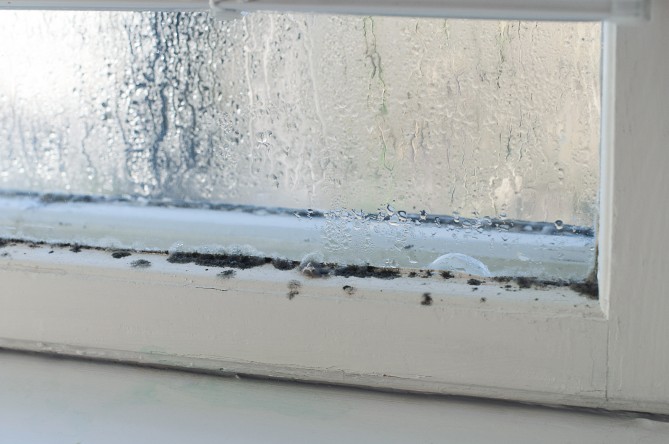


In old houses, condensation may seem a natural phenomenon. But it isn’t. It is primarily an indication that there is something wrong with the insulation or ventilation.
With condensation, damp air turns into a liquid. In the home, that happens when air with a high humidity level comes into contact with a cool piece of the building. This makes water vapour turn into water. That translates itself into water drops against the windows or damp spots on the walls. The reason for the problem can be poor ventilation.
You may, for example, not use an extractor hood during cooking or do not ventilate after a shower or bath. But even then, the damp air has to come into contact with a cold building surface. You can encounter such surfaces for example in single glazing, old aluminium frames or in walls with a thermal bridge. Such a thermal bridge is a place where the insulation is interrupted.
It is advisable to resolve the ventilation or thermal bridge problem. This will not only free you from the problem of condensation, but also improve the comfort in the home.
Translated to the home, this means that air that is damp or too damp must come into contact with a cold surface in order to cause condensation. You get such damp air when, for example, cooking, taking a shower or drying washing indoors.
The damp air should be removed. That is why you should turn on the extractor hood during cooking or ventilate the bathroom during and after a shower. In other words, you should make sure there is good ventilation.
If you don’t expel the damp air, it will come into contact somewhere in the home with a surface that is colder than the ambient temperature. As a result, the water vapour in the air will transform into water in that location. You will then see drops of water against the window panes or damp spots on the wall.
Then you must ask yourself why the damp air settles in exactly those places. In the case of windows, you will often find that you have single glazing. In aluminium frames of an older type, the condensation can also appear on the profiles or panels. These frames are not fitted with a thermal break and the panels are not insulated.
If the damp occurs on a wall, that indicates a thermal bridge. A thermal bridge is a break in the insulation which makes the wall colder at that spot.
You should deal with such problem spots. First of all, because the damp can cause mould and that is detrimental to health and to the structure of the building. What’s more, these surfaces are not only colder than the surroundings when the humidity is high, they are always colder. So heat loss occurs at these places and that is pernicious for your living comfort and for your wallet.
For ways of resolving thermal bridges, look at the answer to the question ‘What is a thermal bridge and how can I resolve it?’
Conventional double glazing hasn’t been used for several years now. These days super-insulating glazing or even triple glazing is used.
Read the testimonialSubscribe to our newsletter and stay informed about energyfacts.
